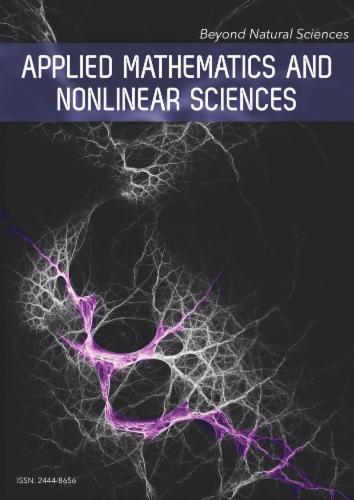Human Resource Information Sharing and Management in Business Administration Environment Combined with Blockchain Technology
Study on Electricity Settlement Mechanism Considering Competitiveness of Electricity Markets
Research on Big Data-driven Knowledge Graph Construction Technology for Intangible Cultural Heritage Digital Resources
A study on timbre feature extraction and sound quality optimisation of guzheng performance based on spectral analysis
Constructing a Quantitative System of Intelligent Trial Standards for Civil and Commercial Law Cases Based on Network Flow Algorithm in Intelligent Judicial Environment
Exploring the use of big data technology in mental health monitoring and intervention
Applied Mathematics and Nonlinear Sciences has been classified in the 3rd place with the result of 2.7 JCI metrics in Mathematics, Applied Category Ranking released by Clarivate Analytics in the Journal Citation Report 2021!
Applied Mathematics and Nonlinear Sciences (AMNS) provides a forum for the rapid publication of original research in this field. The journal’s scope encompasses all nonlinear dynamic phenomena associated with mechanical, structural, civil, aeronautical, oceanography, electrical, and control systems.
We particularly welcome papers in the fields of celestial mechanics, mathematical physics, high-energy astrophysics, astrophysical studies of the interstellar medium, planetary and space science.
Review articles and original contributions are based on analytical, computational, and experimental methods.
Applied Mathematics and Nonlinear Sciences (AMNS) is dedicated to the publication of the highest quality short papers, regular papers, and expository papers. AMNS considers only original and timely contributions containing new results in various fields of Applied Mathematics and Nonlinear Sciences. Manuscripts may discuss fundamental or applied issues, and should offer clear evidence of novelty and significance. Papers devoted, for the most part, to pure mathematical and computational issues, with limited direct connection to current trends of nonlinear sciences research, are generally not suitable for publication in AMNS. Similarly, small, technical advances, or papers concerned only with mathematical applications or issues of basic science may not be considered favourably.
AMNS publishes in a continuous volume open model - Issue 1 is opened in January and closed at the at the end of December.
AMNS accepts papers through single peer blind external review by professional colleagues in the relevant fields. Unless clearly below the standard required by the journal, submitted articles will be sent to referees. They will generally be reviewed by at least two experts with the aim of reaching a decision as soon as possible. Where possible, the final decision is made on the basis that the referees are in accordance with one another. When there is a strong disagreement between referees, advice is sought from a member of the journals Editorial Board.
AMNS provides a forum for the rapid publication of original research in the field. The journal’s scope encompasses all nonlinear dynamic phenomena associated with mechanical, structural, civil, aeronautical, oceanography, electrical, and control systems. Review articles and original contributions are based on analytical, computational, and experimental methods.
The journal examines such topics as perturbation and computational methods, symbolic manipulation, dynamic stability, local and global methods, bifurcations, chaos, and deterministic and random vibrations. The journal also investigates Lie groups, multibody dynamics, robotics, fluid-solid interactions, system modelling and identification, friction and damping models, signal analysis, and measurement techniques.
The scope of this journal covers but is not limited to:
- Numerical analysis
- Numerical algebra
- Numerical methods for ODE, PDE, FDE
- Computational geometry
- Computational fluid dynamics
- Computational optimisation
- Computational probability
- Statistical computation and simulation
- Computational intelligence
- Computational complexity
- Theoretical computer science
- Computational physics
- Computational biology
- Dynamical systems
- Mathematical analysis
- Topology and its applications
- Nonlinear methods and its applications
- Related applications in physics, engineering, chemistry, economics and the social sciences
Archiving
Sciendo archives the contents of this journal in Portico - digital long-term preservation service of scholarly books, journals and collections.
Plagiarism Policy
The editorial board is participating in a growing community of Similarity Check System's users in order to ensure that the content published is original and trustworthy. Similarity Check is a medium that allows for comprehensive manuscripts screening, aimed to eliminate plagiarism and provide a high standard and quality peer-review process.
